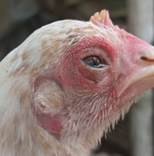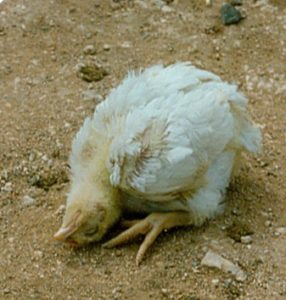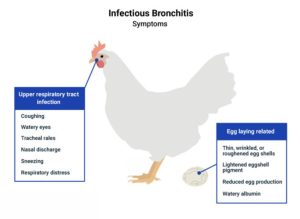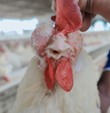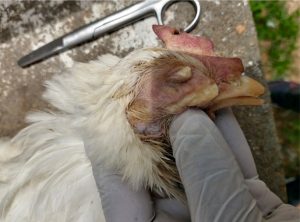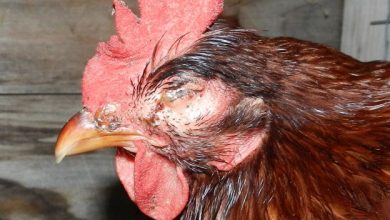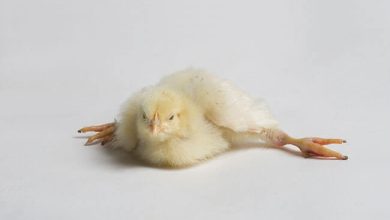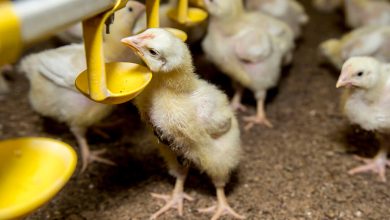Newcastle disease, Infectious bronchitis and Infectious coryza
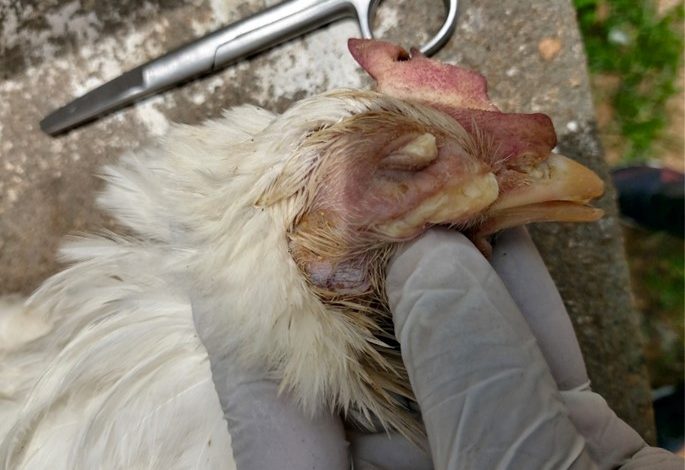
Infectious diseases: Newcastle disease, Infectious bronchitis and Infectious coryza, a review.
Dr. Dushyant Pande (Product Manager- Vaccines)
Dr. Sanjay Singhal (Chief Operating Officer)
Stallen South Asia Pvt. Ltd.
Introduction
Poultry farming plays a crucial role in meeting global demand for meat and eggs. However, the industry faces various challenges, including the threat of infectious diseases. Among the many diseases that affects poultry, Newcastle disease, infectious bronchitis, and avian infectious coryza are significant concerns for farmers worldwide. In this article we will delve into the nature, symptoms, prevention, and control of these three diseases.
Newcastle disease
Newcastle disease is highly contagious viral disease that affects various species of domestic and wild birds, with devastating consequences for poultry industry worldwide. The disease is caused by Avian paramyxovirus 1(APMV- 1), which can spread rapidly, leading to significant economic losses.
Usually, the strains of NDV with ICPI index less than 0.7 are considered as lentogenic while strains with the ICPI value ranges between 0.7- 1.5 are mesogenic and strains with ICPI value more than 1.5 are considered as velogenic pathotype of ND.
Newcastle disease is primarily transmitted through direct contact with their droppings, respiratory secretions, or contaminated equipment, and clothing. It can also be spread indirectly through airborne particles or by birds that carry the virus without showing symptoms. The cross-species transmissions among the birds are common however, the virus has been successfully isolated from non-avian hosts like human, cattle, and sheep.
In India, the first NDV case was recorded in 1928. Since then, several NDV outbreaks have been documented in several different areas of the country. Frequent vaccination with the NDV strain LaSota has been attempted in order to prevent possible disease outbreaks. However, vaccine failure is a common occurrence in India because of poor vaccination schedule, inconsistent vaccine dosages, an inadequate level of cold chain management, and the nation’s hot climate.
The severity of Newcastle disease can vary ranging from mild respiratory signs to severe neurological symptoms and high mortality rates. The incubation period typically lasts from 2 to 15 days. Common symptoms observed in infected birds include:
- Respiratory signs: sneezing, coughing, nasal discharge and difficulty in breathing.
- Digestive issues: diarrhoea, reduced feed intake.
- Nerves system disorder: Paralysis, tremors, torticollis, and other neurological abnormalities.
- General signs: Depression, weight loss, decreased activity, and decreased egg production in laying hens, sudden death.
The lymphoid-dependent regions of chickens are affected by virulent viscerotropic isolates, which results into necrosis and haemorrhages. Birds in lay occasionally experience atrophied follicles, oviduct degeneration, and egg yolk peritonitis.
The severity of symptoms and mortality rate can vary depending on the strain of the virus, age, coinfection, mixed infection, toxicity, status of immunization and species of the birds affected. Some strains of Newcastle disease can cause high mortality rates, while others may lead to mild symptoms.
Preventing Newcastle disease is crucial for maintaining the health and productivity of poultry flocks. Vaccination plays a critical role in protecting poultry against Newcastle disease. Vaccines are available and should be administered following the recommended vaccination schedule.
Implementing strict biosecurity measures is essential to prevent the introduction and spread of virus. This includes controlling access to the farm, disinfecting footwear and equipment, using separate clothing for farm visits, and limiting contact between domestic and wild birds.
Regularly clean and disinfect poultry houses, equipment, and vehicles to minimize the survival of virus. Maintain a vigilant monitoring system to detect any signs of Newcastle disease promptly.
Infectious Bronchitis
Infectious bronchitis is highly contagious viral disease that affects chickens worldwide. It is caused by corona virus that primarily affects chickens but can also affect other avian species. The virus is highly contagious and can spread through direct contact with infected birds, contaminated feed, water and equipment, and air borne particles. Wild birds and insects can act as a potential carrier of the virus, introducing it to poultry flocks. Infectious bronchitis possesses significant challenges to the poultry industry due to economic impact and difficulty in controlling its spread.
The clinical signs and severity of infectious bronchitis can vary depending on various factors, age, immune status of the birds, strain of the virus, toxicity, vaccination status of the birds. The common symptoms of infectious bronchitis include reduced appetite, decreased egg production, production of misshapen eggs, and poor growth rates. In severe cases, mortality rates can be high, particularly in young chicks.
Prevention and control of infectious bronchitis rely on a combination of vaccination, biosecurity measures and managemental practices. Good biosecurity measures involve implementing measures to prevent the introduction of the virus into the flock, such as strict control of visitor’s access, disinfection protocols.
Vaccination is an essential tool in controlling the diseases, and various vaccines are available for different strains of IBV. Vaccination programs may vary as per the geographical area and should be developed based on specific needs of poultry operations.
Maintaining good hygiene practices in poultry facilities is essential. This includes regular cleaning and disinfection of housing, equipment, and water sources. Proper waste management and pest control are also important to reduce the risk of disease transmission.
Avian Infectious coryza
Avian infectious coryza is a highly contagious respiratory disease that affects various avian species, including chickens, turkeys, pheasants, and guinea fowl. Infectious coryza is caused by Avibacterium paragallinarum which primarily affects the upper respiratory system of birds, leading to the range of clinical signs. These include nasal discharge, facial swelling, sinusitis, conjunctivitis, coughing, sneezing and reduction in overall health and productivity. The severity of the symptoms can vary depending upon factors such as the strain of bacterium, age, immune and vaccination status of the bird, environmental conditions
Reduced feed and water consumption in infected birds along with the increased number of culls can be observed. Drop in egg production in layer birds is very common. In flocks where the infection has developed into a chronic condition and become aggravated by other bacterial diseases, foul odours may be noticed.
Unusual pathological presentations like otitis and meningioencephalits were also reported. Apart from upper respiratory tract, A. paragallinarum has been isolated from non- respiratory locations such as liver, kidney, and tarsal joint.
Infectious coryza is primarily transmitted through direct contact with infected birds, particularly through respiratory secretions and droplets. The bacterium can persist in the environment and can be indirectly transmitted through contaminated feed, water, equipment, and clothing. Wild birds may facilitate the entry of bacterium into susceptible flocks.
Effective vaccination strategies against these infectious diseases may provide better protection. The primary objective of vaccination in combating infectious diseases has been to reduce mortality and morbidity losses. Incorporation of multiple strains in the vaccines may give promising results moreover the combined vaccines for 2 or more diseases are also available in the market which reduces the vaccination and handling stress on birds, time, and labour.
References
Blackall PG. Infectious coryza: overview of the disease and new diagnostic options. Clin Microbiol Rev 1999; 12:627–632.
Blackall PG, Soriano-Vargas E. Infectious coryza and related bacterial infections. In: Swayne DE, et al., eds. Disease of Poultry. 13th ed. Ames, IA: Wiley-Blackwell, 2013:859–868
Collins, M.S., S. Franklin, I. Strong, G. Meulemans, and D.J. Alexander. 1998. Antigenic and phylogenetic studies on a variant Newcastle disease virus using anti‐ fusion protein monoclonal antibodies and partial sequencing of the fusion protein gene. Avian Pathol. 27:90–96.
Gould, A.R., J.A. Kattenbelt, P. Selleck, E. Hansson, A. Della‐Porta, and H.A. Westbury. 2001. Virulent Newcastle disease in Australia: molecular epidemiological analysis of viruses isolated prior to and during the outbreaks of 1998–2000. Virus Res. 77:51–60.
Manuela Crispo,1 C. Gabriel Sentíes-Cué, George L. Cooper, Grace Mountainspring, Charles Corsiglia, Arthur A. Bickford, Simone T. Stoute. 2018. Otitis and meningoencephalitis associated with infectious coryza (Avibacterium paragallinarum) in commercial broiler chickens. Journal of Veterinary Diagnostic Investigation 2018, Vol. 30(5) 784–788.
Peeters, B.P.H., O.S. De Leeuw, G. Koch, and A.L.J. Gielkens. 1999. Rescue of Newcastle disease virus from cloned cDNA: evidence that cleavability of the fusion protein is a major determinant for virulence. J Virol. 73:5001–5009.
Sandoval VE, et al. Complicated infectious coryza outbreaks in Argentina. Avian Dis 1994; 38:672–678
Yates VJ, Dorothy EF, Henderson BW Jr (1952) Isolation of Newcastle disease virus from a calf. J Am Vet Med Assoc 120:149–150.

